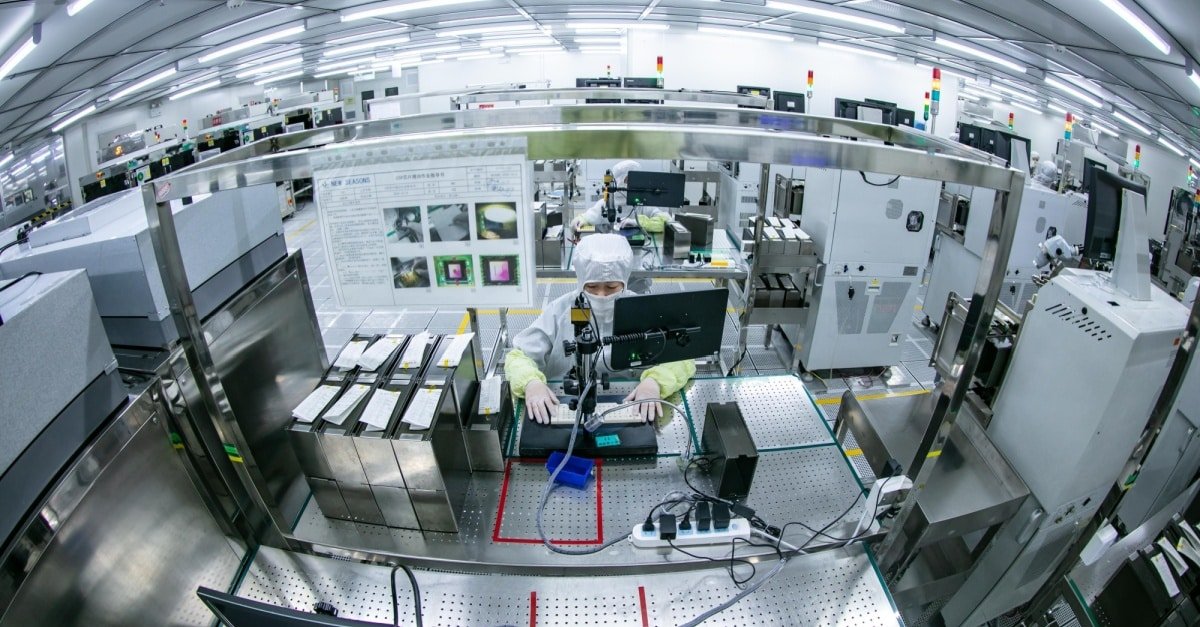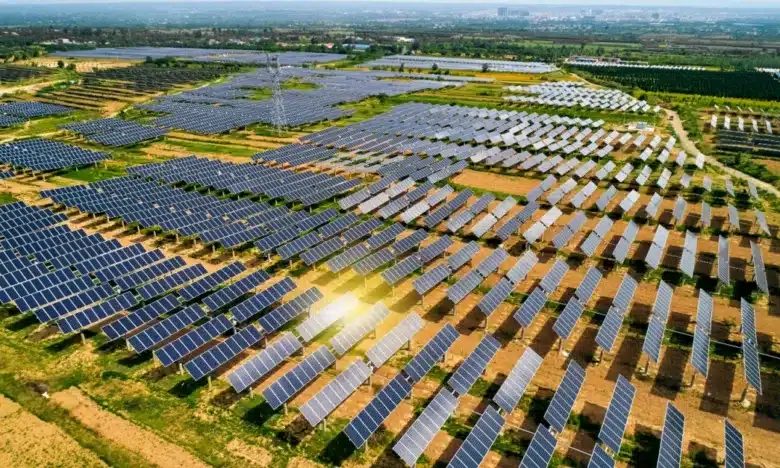
Manufacturing Growth in the PH Hinges on Steady Energy Supply
- July 1, 2025
The Philippine manufacturing industry is steadily expanding and playing an increasingly vital role in the national economy.
In 2022, manufacturing contributed about 16.2%, equivalent to approximately ₱3.78 trillion, to the country’s Gross Domestic Product (GDP). By 2024, The industry also employs around 7% of the country’s total workforce, growing by around 6% from 2023 to 2024.
Philippine Statistics Authority noted that the Philippine GDP grew by 5.4% year-on-year in the first quarter of 2025. Manufacturing ranked as the third largest contributor to this growth, accounting for 4.1% of the overall expansion.
(Also read: Can Natural Gas Help Secure Our Energy Future?)
PH manufacturing push
While traditional manufacturing remains an economic driver, the global shift toward digital and high-tech industries is reshaping the landscape—and the Philippines is positioning itself to claim a share of that future. Electronics manufacturing, in particular, is making a strong case for revival.
According to Jay Hilotin, Senior Assistant Editor of Gulf News, the Philippines was once known as the “Silicon Valley of Southeast Asia” due to its strong electronics manufacturing sector in the 1990s. That momentum faded over time, marked by Intel’s closure in 2009 after operating in the country since 1974.
However, Hilotin mentioned the Philippines still houses seven of the globe’s top 20 chipmakers, collectively accounting for around 10% of global production and distribution.
According to the Semiconductor and Electronics Industries in the Philippines Inc. (SEIPI), electronics exports reached $3.84 billion in April 2024, making up 61.74% of the country’s total $6.22 billion exports for that month.
While electronics continued to lead the Philippines’ manufacturing growth with a 14.4% annual increase in value in July 2024, food products followed closely with a 14.6% rise. Transport equipment also contributed to the sector’s 4.7% growth in value and 5.3% increase in output, signaling renewed momentum across key manufacturing segments.
Hoping to draw more foreign manufacturers, the Philippines has rolled out the CREATE MORE Act, a sweeping amendment to Republic Act 11534. Unveiled by Finance Secretary Ralph Recto in November 2024, the law slashes corporate tax to 20%, offers full electricity cost coverage, and extends tax perks for up to 27 years.
Meanwhile, Department of Finance Undersecretary Domini Velasquez highlighted the Foreign Investment Long-Term Lease Act, which seeks to extend lease terms for foreign investors from the current 50 years to up to 99 years—a move aimed at attracting more enduring and stable foreign investments.
PRIME Philippines Founder and CEO Jettson Yu projected a sharp rise in demand for industrial spaces nationwide, with manufacturing emerging as a key driver. He also noted that foreign manufacturers have shown growing interest in expanding their operations in the Philippines.
These planned expansions are largely focused on secondary manufacturing hubs rather than major industrial centers, as companies look to diversify their locations and minimize potential risks.
(Also read: Why Coal Remains Essential for Energy Security)
Stable & affordable electricity, a major driver of manufacturing
But what’s holding Philippine manufacturing back?
According to Hilotin, the answer lies in the country’s steep electricity costs. Data shows that power rates in the Philippines are 25% to 87.5% higher than those in several ASEAN neighbors.
However, a 2022 study conducted by International Energy Consultants (IEC), an Australia-based firm, analyzed electricity pricing in 46 global markets, including two U.S. states, to offer a more nuanced understanding of global power costs. Representing the Philippines in the report was Meralco, the country’s largest power distributor. Contrary to public perception, the findings challenged long-standing claims about excessive power rates in the country.
The IEC study found that Meralco’s generation charge, at $0.1342 per kilowatt-hour, was lower than the estimated cost of producing wholesale power in Luzon. Its distribution charge, which accounts for about 14% of consumer bills, was also 33% below the global average. Overall, Meralco’s average electricity rate was 3% lower than international levels.
The study also explained why comparing the Philippines to its Southeast Asian neighbors based purely on retail electricity rates can be misleading. Countries such as Indonesia, Malaysia, Thailand, Vietnam, and Taiwan benefit from generous state subsidies—often covering more than half the real cost of electricity.
In contrast, the Philippines operates on a cost-reflective pricing model, making its rates appear higher in comparison. IEC estimated that matching the subsidy levels of neighboring countries would require approximately ₱241 billion in public funds each year.
Last May, Meralco emphasized that the main driver of high prices at the Wholesale Electricity Spot Market (WESM) is a chronic lack of supply. The obvious and main cause for high WESM prices is the lack of supply or lack of new capacity in the grid,” the utility stressed. “The issues in EERI’s testing and commissioning would not have much significant effect on the grid’s reliability had there been other new baseload power plants that were already built and online.”
Meralco further mentioned that recent capacity additions have been largely solar—power that vanishes at night, when demand typically peaks. Aging infrastructure also complicates the problem, with many of the country’s existing plants over two decades old and prone to unexpected outages.
Additionally, Meralco pointed out that, aside from EERI and GNPower Dinginin—which secured contracts under its 1,800-MW auction—no large greenfield baseload facility has been added to the Luzon grid since 2002.
“Another impact: frequent brownouts and power outages, especially during peak demand seasons or when there is a supply disruption,” Hilotin wrote. “This energy insecurity affects households, industries — and jobs. It disrupts manufacturing operations and reduces productivity and impairs overall competitiveness.”
Hilotin also believes chronic under-investment in the power sector, coupled with an aging policy framework, has left the grid vulnerable. “Moreover, the primacy of electric cooperatives, which are not-for-profit but are notoriously inefficient (brown-out prone, with limited investment in modern infrastructure), has disincentivized manufacturing in the areas they serve (most of the country).” he wrote.
Columnist Alex Magno agrees, calling electric cooperatives outdated. “Our system of electric cooperatives was designed for an earlier age when power demand was just a trickle compared to the deluge our modern economy now needs,” he argued. “They are inadequate by design and unprepared to support an economy with a growing manufacturing base.
He further explained that businesses go where the power supply is stable. Progress, he said, is always linked to rising energy demand.
“The reason is simple. If there is unreliable power supply, any business becomes unsustainable,” Magno wrote. “That fact becomes more emphatic if we seek to build a manufacturing base for our economy. Factories require vast amounts of electric power—reliable and uninterrupted.”
Sources:
https://www.mckinsey.com/ph/our-insights/the-philippines-economy-in-2024-stronger-for-longer
https://psa.gov.ph/statistics/national-accounts/sector3/Gross%20Domestic%20Product
https://businessmirror.com.ph/2025/02/09/growth-areas-trends-drive-developers-plans
https://insiderph.com/uploads/files/32/MERALCO%20PRESS%20RELEASE%20ON%20PSAs.pdf
https://www.philstar.com/opinion/2025/04/05/2433566/inadequate
https://www.pna.gov.ph/articles/1232779
https://www.pna.gov.ph/index.php/opinion/pieces/795-contextualizing-power-rates-in-ph



